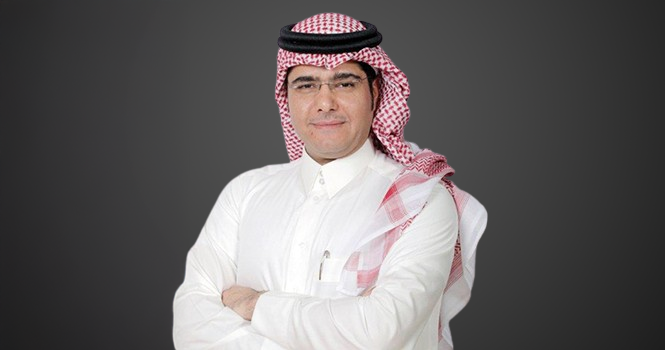Logo of Capital Market Authority (CMA)
The Capital Market Authority (CMA) said the compensation funds are one of the compensation models added to the existing channels — namely, collective and individual lawsuits filed before the committees for resolution of securities disputes.
In an interview with Argaam, the market regulator noted that the compensation fund model is a complement to the compensation channels available to harmed parties in the capital market, but that it is not mandatory or a primary option in all cases.
According to the authority, before establishing these funds, the digital infrastructure and procedural foundations were put in place to ensure bridging between public and private rights and linking them.
The CMA said the compensation fund for the violations on Dar Al Arkan shares is the second such fund it has established, following the earlier announcement (specifically in late July 2025) of a fund to compensate those harmed by violations committed on Watani Steel shares. This was a first of its kind in market history, under the newly introduced concept of compensating harmed parties from behavior violating the Capital Market Law and its implementing regulations.
The CMA had issued a decision to establish a fund to compensate harmed parties from violations the Appeal Committee for the Resolution of Securities Disputes (ACRSD) had ruled as definitively committed by 17 violators in July 2023. ACRSD ordered them and five other investors to pay SAR 1.196 billion for violating Article 49(a) of the Capital Market Law and Article 2(a) of the Market Conduct Regulations in their trading of Dar Al Arkan shares.
The fund was established under Article 59(d) of the Capital Market Law — representing the newly introduced concept of compensating harmed parties from violations of the law and its regulations — and the CMA noted that the compensation amounts for the harmed parties have been fully deposited.
Badr Al-Ghanim, Deputy for Legal and Enforcement Affairs at the CMA, confirmed that the compensation fund in question was established by a board decision according to the powers granted by the Capital Market Law that was issued under Royal Decree No. (M/30) dated July 31, 2003 and amended by Royal Decree No. (M/16) dated Sept. 18, 2019. It empowered the authority to organize procedures for compensating harmed parties from violations committed in the Saudi capital market — including establishing such a fund to compensate harmed parties from illicit gains collected from violators.
He said this step is followed by drafting a proposed distribution plan by the CMA and submitting it to CRSD for approval, afterwhich the CMA completes appropriate procedures to disburse the compensations to those harmed.
Meanwhile, Ali Al-Dakhil, Director General of the General Department of Communication and Investor Protection at the CMA, stressed that the authority gives significant attention to everything that preserves the rights of investors and participants in the capital market.
This includes taking the necessary measures and suitable procedures to protect the rights of harmed parties from any unfair practices or violations that some violating investors might commit, which in turn may cause damage to other investors. The measures include detecting violations, conducting verification and investigation, coordinating with relevant bodies to follow litigation stages and final verdicts, and culminating in earnest efforts to compensate harmed parties within the statutory powers of the authority.
Argaam held an interview with CMA officials to discuss this topic. We first posed several questions to Al-Ghanim, as follows:
Q: Since this interview mainly pertains to compensating harmed parties from violations in the capital market, could you shed light on compensations in recent years in terms of compensation values?
A: The total value of compensations judicially awarded by the committees for resolution of securities disputes in favor of harmed parties over the past six years (specifically from 2019 to 2024) reached nearly SAR 3 billion, rising steadily year after year. The committees for resolution of securities disputes issued awards amounting to SAR 40 million in 2019, followed by SAR 93 million in 2020, then SAR 367 million in 2021. The highest value was in 2022 at SAR 1.75 billion. In 2023, awards totaled SAR 245 million, and in 2024 they increased to SAR 389 million.

Badr Al-Ghanim, Deputy for Legal and Enforcement Affairs at the CMA
The authority, pursuant to its statutory powers, takes a number of possible measures and precautions to ensure enforcement of decisions by the committees for resolution of securities disputes, coordinating with relevant bodies to protect investor rights in the Saudi capital market.
Q: The compensations you mentioned were based on direct judicial rulings for harmed parties. Could you give us insight into any developments of protecting private rights and the concept of compensation funds? When did the CMA have the authority to establish these funds? And why were they not applied to prior cases?
A: First, I would like to clarify that compensation funds are one of the compensation models added to the existing channels — class and individual lawsuits before the committees for resolution of securities disputes. This newly introduced model came about as a result of amending the Capital Market Law on the CMA’s proposal; paragraph (d) was added to Article 59 of the law. It stipulated the following:
“With due regard to paragraph (4/a) of this Article, the authority may organize procedures for compensating individuals who have suffered damages as a result of violations committed, and it may, for that purpose, create special compensation funds whose resource is illicit gains collected into the authority’s account. The compensation of harmed individuals shall be pursuant to a distribution plan adopted by the committee, and such funds shall be subject to the rules and procedures the authority sets to enhance their operation and limit legal and financial risks involved.”
We at the authority studied the mechanism of applying the concept of compensation funds to ensure a high level of readiness for implementation on all levels. We seek to enhance the effectiveness of those funds, fulfill their intended purpose, limit associated legal and financial risks, and facilitate delivery of investor rights as quickly as possible. The primary objective of these funds is to compensate harmed parties in capital market cases for which final rulings have been issued by the committees for resolution of securities disputes, obliging violators to pay illicit gains.
Second, there are other considerations that necessitated these funds, including preserving investor rights through all available means, expediting compensation procedures for damages inflicted on traders because of unfair or illegal violations, and providing additional channels for reclaiming rights and returning them to their owners.
Q: Does the compensation fund concept eliminate the previous mechanisms of claiming compensation such as class or individual lawsuits?
A: The compensation fund model is a complement to the compensation channels available to harmed parties in the capital market. It is not mandatory or a primary option in all cases; rather it is one procedure for organizing compensation for individuals harmed by violations. This does not prejudice any harmed party’s right to file claims before the committees for resolution of the securities disputes individually or collectively. Pursuing an individual or class claim remains the main route for claiming and securing compensation.
The authority adopts a number of criteria to assess the suitability of forming a compensation fund from illicit gains recovered from violators whenever the facts and circumstances of the case establish the presence of actual harmed parties. This is also when the authority deems that establishing a fund would be more effective and practical than other means of compensating parties harmed by violations in the capital market under the law and its regulations.

Ali Al-Dakhil, Director General of the General Department of Communication and Investor Protection at the CMA
We also asked Al-Dakhil about compensation funds for harmed parties generally and specifically the compensation fund for the violations on Dar Al Arkan shares:
Q: Could you clarify the concept of compensation funds to investor protection? Why did the CMA adopt it? How about the structure of these funds?
A: There is no doubt that the dynamic nature of capital markets may lead some traders to commit prohibited or unfair practices. Supervisory bodies typically respond by monitoring violations and recovering illicit gains. In an effort to adopt best practices that strengthen investor confidence and protect investors, the CMA adopted the concept of facilitating compensation mechanisms and enhancing trader confidence. This commitment was raised to a strategic level and reflected in the key pillars of the authority’s 2024–2026 strategy. All of this aims for steady progress toward efficient markets aligned with our national goals, striving to elevate our capital market to ranks among global markets.
Regarding the structure of these funds, they can be simply described as independent accounts established by the CMA, into which illicit gains recovered pursuant to a final decision by the committees for resolution of securities disputes in public-interest cases are deposited. The purpose is to organize compensation to harmed parties from the same violation tied to that decision. A distribution plan — upon approval by the committee for resolution of securities dispute — lays out the judicial and financial principles for distributing compensation to harmed parties. The CMA executes and disburses from the amounts deposited in those funds.
Q: Could you define in detail who is eligible for compensation from this fund?
A: The compensation fund for the violations on Dar Al Arkan shares, created by a CMA decision, receives the illicit gains that have been or are being collected pursuant to the final decision of ACRSD against persons who violated Article 49 of the Capital Market Law and the Market Conduct Regulations.
From the date of the appeal decision, the authority worked to activate Article 59 of the Capital Market Law, which grants it the authority to organize compensation procedures and create dedicated funds sourced from illicit gains. It then drafted a distribution plan consistent with damage levels, carried out collection procedures against violators, and ultimately established this fund to compensate eligible parties under the approved distribution plan.
The eligible claimants are investors in the capital market and traders of Dar Al Arkan shares during the “violation period” from April 27, 2017 to April 26, 2018, whose technical records showed that they suffered harm due to those violations.
This is the first compensation fund for harmed parties from violations on shares of a company listed on the main market, and the second of its kind when considering Watani Steel that is listed on the Nomu-Parallel Market.
Q: How were the eligible claimants determined? And which body approved these compensations?
A: Determination of harmed parties was made based on technical records and the market’s electronic systems in a manner consistent with feasible justice principles. As for who approved the compensations, the authority collects the amounts adjudicated against violators, submits a distribution plan to the committee for resolution of securities disputes, and compensation is approved via a decision by that committee.
Standards for identifying harmed parties, determining the extent of damage, and calculating compensation are all adopted by the committee in accordance with judicial principles it applies in such matters.
Q: The fund concept implies financial disbursement to harmed investors from violations definitively ruled by committees. Its success depends on having financial resources. What is the source of funding for this fund?
A: The source of the fund is the illicit gains obtained by the violators in the case mentioned earlier through their improper trades of Dar Al Arkan shares. After the final ruling, execution proceeded against those violators in accordance with relevant regulations, and the gains recovered are deposited into the dedicated fund for compensating harmed parties — from which disbursements are made to eligible claimants.
Q: Will there be similar compensation funds in the future?
A: Sure, and this fund is a prime example following the first one launched in July. Similar compensation funds may be created whenever the CMA sees a need to use this model of compensation, provided the criteria for creation are met.
The draft mechanism for distribution would be submitted to the committees for resolution of securities disputes for approval. This approach aligns with the CMA’s 2024–2026 strategy. The digital infrastructure and procedural foundations were established in advance to ensure bridging between public and private rights.
The coordination scope includes several procedures that guarantee synchronization between the two paths, and one of the most important initiatives in this synchronization is the compensation funds. The CMA adopts a matrix of criteria to assess the suitability of announced violations for forming a compensation fund.
Be the first to comment


Comments Analysis: